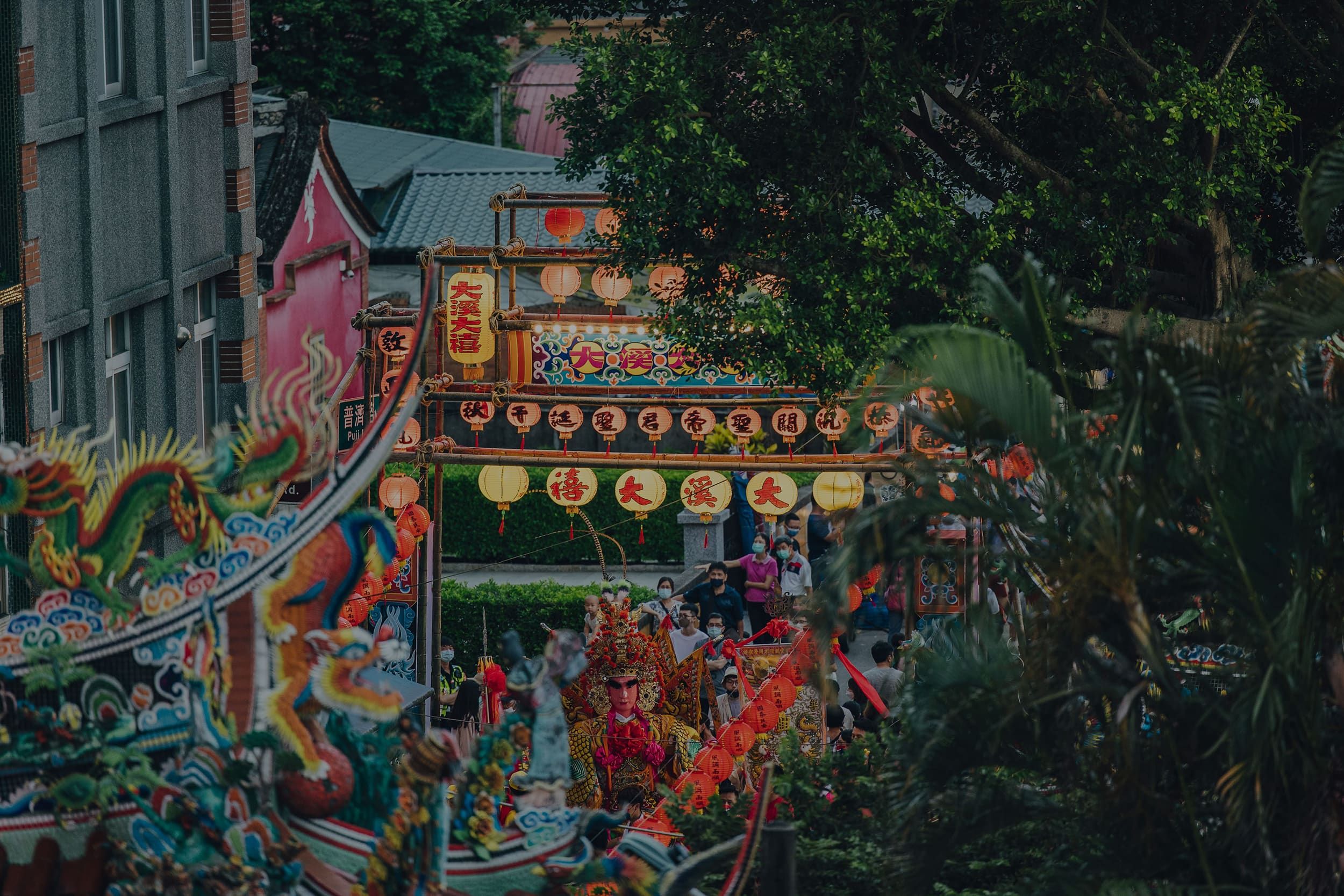
June 24 on the lunar calendar, known by the folks of Daxi as “the Reception of June 24,” is the birthday of the highly-venerated general Guan Yu, or “Holy Emperor Guan Yu of Daxi’s Puji Temple.” The event is one that mobilizes the whole town in an “all hands on deck” fashion, and the key to unravel the religious beliefs and life experiences of Daxi residents. The festive pilgrimage around town, a heritage event of more than a hundred years old, is participated by temple officials, volunteers and industrial and business representatives, plus Shetou’s – community clubs with rich local characteristics. These Shetou’s are voluntarily formed, and often trade- or locality-based, which explains why the art parades of individual Shetou’s manifest distinctive flairs, such as trade-based “ox plough parade formation,” “ink art parade formation” and “Earth and Water Duo.” The leading banner team, the dragon formation, the lion formation, the servant boy formation, the beiguan formation and the general formation dazzle onlookers with their spirited performances. The event also brings friends and family together, making it the literal “other lunar new year festival” in its liveliness and significance.
DAXI DAXI REVIVAL
Experience x Community Engagement x Cultural Revival
Feel the pulse of festive joy through this Ecomuseum-initiated project, as the whole of Daxi is transformed into a performance venue. This carefully-designed project engages the locals and businesses in the festival to be well-represented, attracts the audience to experience and learn, thus promoting a cultural revival. This folk celebration facilitates the preservation and revival of the town’s festival culture in the day-to-day living experience, and adds value to festival-inspired industrial and business activities.
This century-old cultural legacy upheld in Daxi, “the birthday celebration of Holy Emperor Guan Yu of Daxi’s Puji Temple,” is a show of appreciation to the deity’s protection of the town. The townspeople voluntarily host a birthday carnival on the 24th day of June of the lunar calendar. Young or old, male or female, the town folk come together to make it the literal “second lunar new year celebration of the Daxi townspeople.”
To preserve, pass on and promote this special folk tradition, the Daxi Wood Art Ecomuseum adopts a museum-based festive brand, and combines “Daxi/Daxi” in a homonymic fashion to highlight the significance of the festivity locale and the deity’s birthday. The word “Revival” is added to the English tagline to acknowledge the reimagining of festive culture in our daily living, that it’s a Daxi-only cultural experience. The event is underpinned with education and community design elements to encourage greater support, spiritual revival and wider public participation for this festive culture as a life experience.